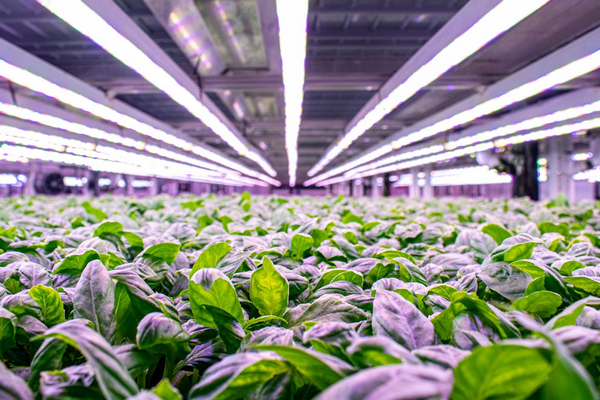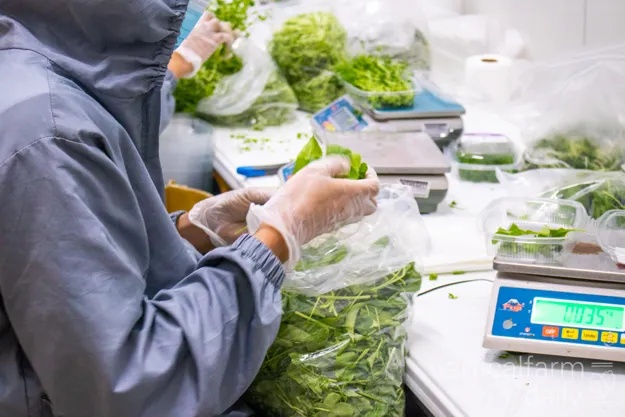Robert Colangelo, founder and CEO of Green Sense Farms, has been diligent in writing an article on the current CEA industry, which he describes as a battlefield.
He begins his story by writing about WWII. "It was a little over three years into WW II before the British won their first major battle. On November 10, 1942, Winston Churchill gave a speech to set expectations in reference to the Northern African victory and said, "Now this is not the end. It is not even the beginning of the end. But it is, perhaps, the end of the beginning."
According to Robert, many are questioning if this is the end of CEA, specifically vertical farms. The CEA industry is transitioning from an emerging market. CEA startups are in a fight to survive, and wars produce a lot of carnage with few winners. For founders and staff, it's a roller coaster of emotions as they work tirelessly to raise capital, battle cash flow, hire staff, bring their technology to market, and secure sales.
 Robert Colangelo
Robert Colangelo
Megatrend
In Robert's opinion, the world is at a point where farming is impacting the climate, and the climate is impacting farming. Field farms are one of the biggest users of water and energy and the biggest emitters of greenhouse gas, making it difficult to produce consistent annual crop yields. Several advancements have been made to reduce farming's impact on the environment, including precision farming, regenerative farming, biological pest control, and integrating livestock and crops.
These techniques can help reduce energy, water, and pesticide use, but farms are still at the mercy of the climate. Moving select crops to be grown indoors can be part of the solution. For this to happen on a large-scale, CEA facilities will need to improve their farm design and operations to be cost-effective.
As Robert puts it, deciding which structure works best comes down to the 4C's. Thus, what Crop will be grown, what is the outdoor climate and what structure and mechanical equipment is required to control the indoor climate, what is the Capacity to be grown to properly size the farm, and what is the Capital budget to cost-effectively engineer the grow structure?
Photo taken at Jones Food Company, UK, by VerticalFarmDaily.com
Has CEA failed or won the first major battle?
He continues, "New markets are prone to high failure rates. It's part of the maturation process as the market refines products and services to meet customer needs. COVID, supply chain issues, and inflation have all exposed weaknesses in CEA companies causing those less resilient to fail."
Several other issues have contributed to the failure, as Robert finds, including low-interest rates creating cheap capital, irrational exuberance for indoor growing technology by eager investors reacting to the hype, poor business models, bad technology, and the wrong management teams.
Battles won
"We have learned a tremendous amount in the last 15 years when it comes to building and operating vertical farms. There has also been a lot of success in advancements in growing technology. For precise answers, it is important to speak to specific crops, geographic location, and outdoor climate," Robert affirms.
In general, these are the advancements Robert has observed in the CEA industry:
LED light technology: Advancements in the light spectrum, intensity, and energy conservation, along with decreased costs, have been recognized. In addition, there have been improvements in the ease of hanging lights, wiring lights, and connectors.
HVAC equipment: Improvements in equipment that can better address sensible heat loads and (the more difficult to control) latent heat loads produced from plant transpiration. In addition, improvements in air circulation to achieve consistent airflow both horizontally, vertically, and at the crop canopy.
Fertigation equipment: Improvements in the ability to recirculate nutrient and irrigation water to conserve water and fertilizer and make equipment more user-friendly to operate.
Water treatment equipment: Improvements in water treatment systems to condition return water so that it can be recirculated, controlling pathogens, viruses, mold, and bacteria to grow healthier plants.

Photo taken at Jones Food Company, UK, by VerticalFarmDaily.com
Integrated Pest Management (IPM): Improved practices that identify and control pests in indoor grow operations, including the use of biologicals to reduce or eliminate the use of pesticides.
Sensors and Automation Controls: Precise delivery of growing inputs to better manage operations using data to measure, monitor, and control inputs.
Enterprise Resource Planning (ERP): The use of software to better manage operations by sharing and connecting inventory, plant growth, sales, and accounting data to reduce shrinkage and loss and increase profitability.
Improved Genetics: Several seed companies are bringing seeds designed to grow in indoor vertical farms using LED lights. In the future, we will see a wider variety of crops grown due to advancements in genetics.
Improved Research: Several universities have focused on providing practical CEA research and generating reports and data that provide growers with reliable information to make fact-based decisions regarding equipment purchases and practices to improve plant quality.
 Photo taken at Future Fresh by VerticalFarmDaily.com
Photo taken at Future Fresh by VerticalFarmDaily.com
So what is the next battle?
Capital
"All of us in the industry have seen an end to easy money based on promises and much more focus on a viable business model and path to profitability," once said Rick Vanzura, CEO of Freight Farms.
"Venture Capital has been abundant to date, and other sources of less expensive capital that require lower rates of return can fund future CEA operations. This can include government sources, impact investment funds, foundations, and when cash flow permits debt financing."
Business models
Vertical farms are not profitable. Lead Economist Tanner Ehmke and Kenneth Scott Zuckerberg at CoBank recently released research stating that for farms to reach profitability, vertical farms must begin to reduce costs and focus on business models.
"Vertical farming operations have high capital requirements. Costly technologies hamper their cash flows, and vertical farms still require manual labor and produce crops at a smaller scale, putting them at a cost disadvantage to traditional outdoor farms."
Technology
Technology is wonderful. It can allow a farm to be more efficient. Too much technology can cause operations to stop being farms and become expensive science experiments. Coming up with the right balance of technology and human resources is key to operating a successful farm. It is also ever-changing, and the balance that works today may not be the right balance in the future.
Photo taken at V+ Agritech, Singapore by VerticalFarmDaily.com
Farm size
Based on our research, a larger vertical farm does not always equate to a lower unit production cost. Currently, vertical farms that are profitable tend to be smaller, with a working manager. It's time to rethink the right size for a vertical farm and how to staff them.
Management
Farming has traditionally been a thinly managed operation. Bloated management teams and excessive staff have been observed in failed farms. Greenhouses have done a much better job at keeping operations lean, a lesson vertical farmers can learn.
Farm location
Farm location, farm size, and the business model are inextricably linked. The advantage of growing indoors is that a farm can be located anywhere. Where economically feasible, locating farms at or close to the consumer offer many advantages.
Energy
Whether a greenhouse or vertical farm, indoor farming can be energy and water intensive. Research and creative engineering are required to design farms that conserve water and energy use and are powered by renewable sources of energy.
The future
"It's time for the industry to focus on winning the next battles so more crops can be grown indoors. As the market matures, the survivors will only get better at growing indoors as we learn from our mistakes," emphasizes Robert.
He concludes that this is not the end or the beginning of the end of CEA." The CEA market is maturing, and companies will operate smarter and be more creative in finding alternative sources of capital to fund projects. But most importantly, CEA needs to be customer focused, have little impact on the environment, and provide consistent, high-quality fruits and vegetables at a competitive price."
For more information:
Robert Colangelo, Founder and CEO
[email protected] Green Sense Farms
Green Sense Farms
6525 Daniel Burnham Drive, Suite B
Portage, IN 46368-1793
+1 219-762-9990
www.greensensefarms.com
